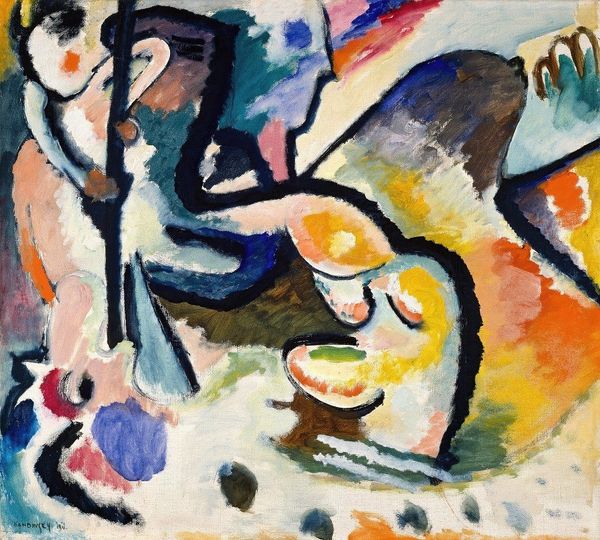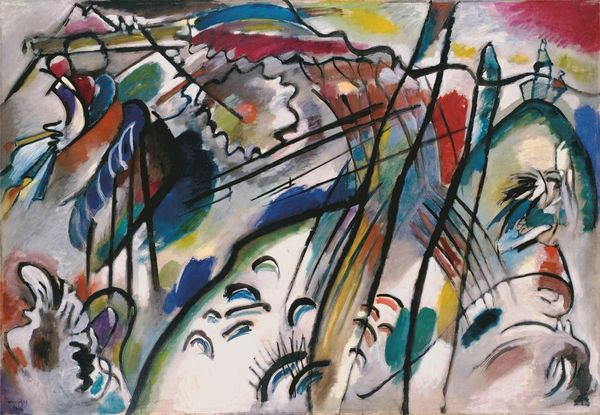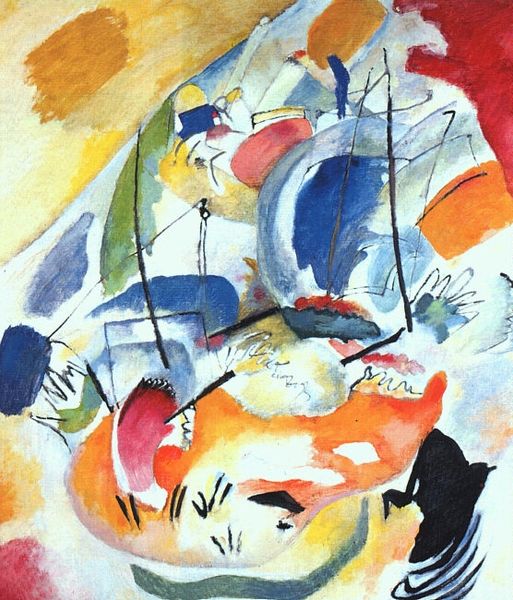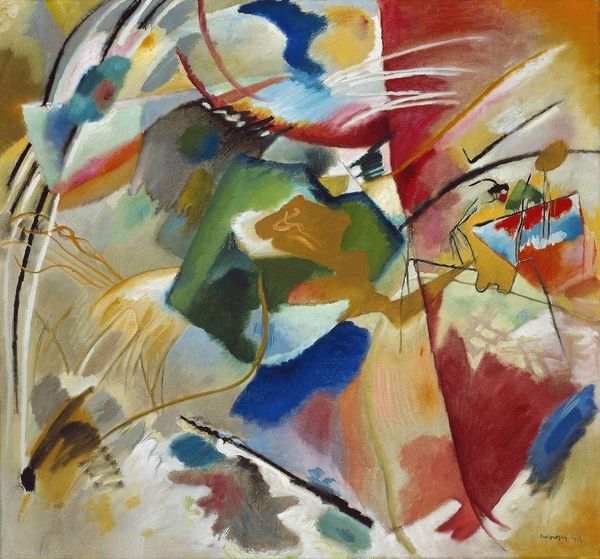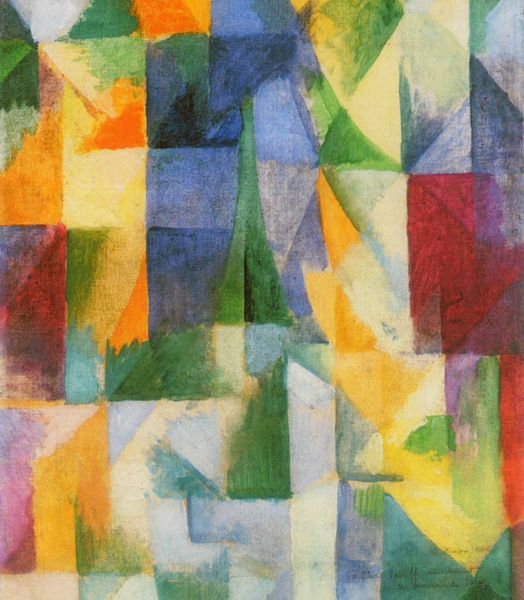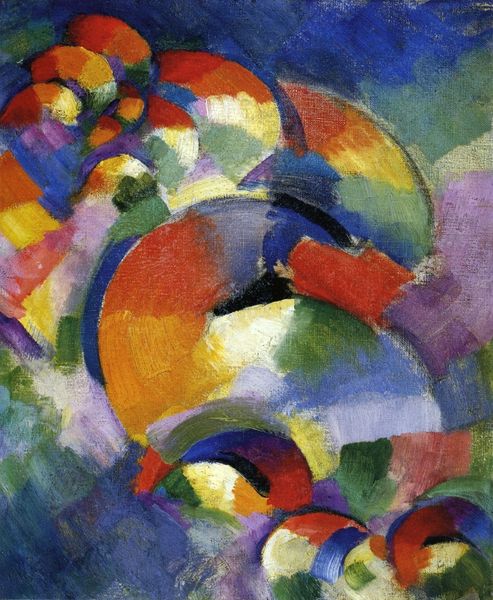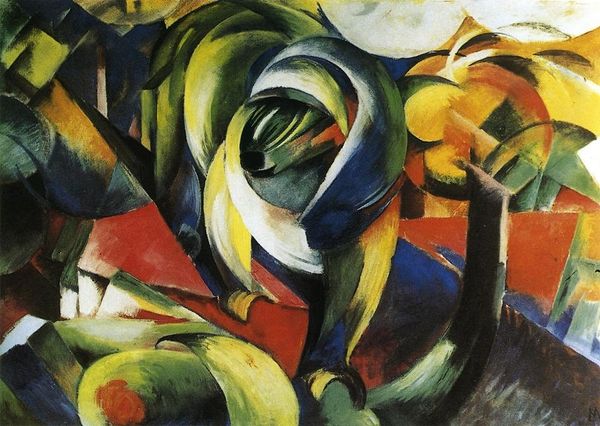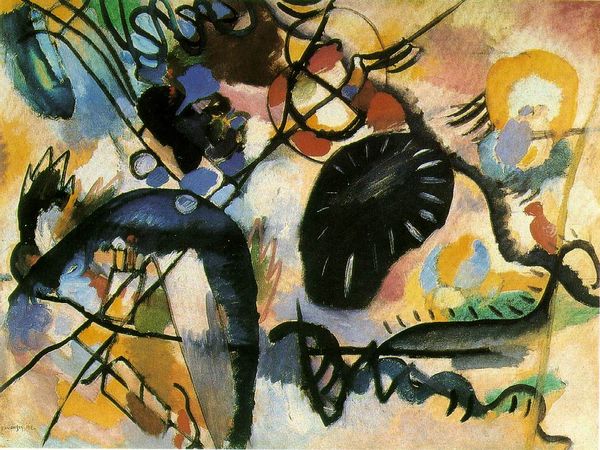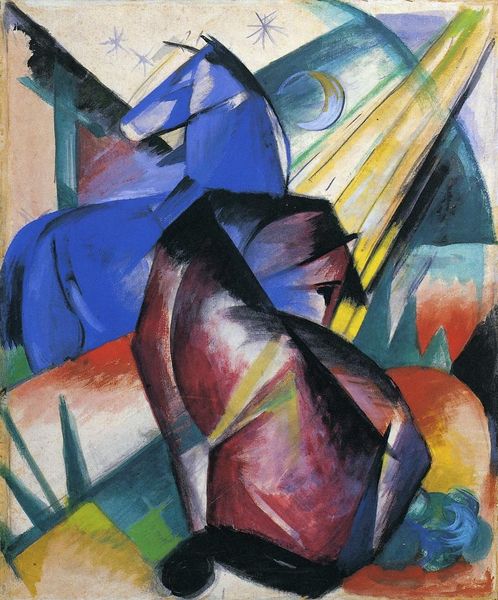
Dimensions: 97 x 107.5 cm
Copyright: Public domain
Curator: Here we have Wassily Kandinsky's *Improvisation 26 (Rowing)*, an oil on canvas created in 1912. It currently resides at the Lenbachhaus in Munich. Editor: It's remarkably buoyant. The composition gives an immediate feeling of upward motion, a sense of light despite the deep blacks cutting through. Curator: The "Improvisations" series is particularly fascinating within Kandinsky’s oeuvre. They represent an important step towards complete abstraction, away from recognizable forms and towards a purely expressive language of color and line. His theories about the spiritual in art are palpably visualized here. Editor: Absolutely. Look at the way the colours interact. That yellow seems almost aggressively joyful next to the somber blue and strokes of black. It's a fascinating play between visual dynamics. And what do you make of the 'Rowing' subtitle, given how abstract the forms are? Curator: Kandinsky often added titles retrospectively, sometimes hinting at the initial inspiration while leaving the interpretation open. Perhaps those forceful black lines do evoke oars cutting through water, disrupting the fluid colour fields. One might consider the social context; boating was becoming an increasingly popular pastime in the early 20th century, as the accessibility of public spaces was increasing, which could also mean that such an activity could act as an expression of the public space, recreation for many rather than for just a few. Editor: I can see the rowing element, yes. However, the real dynamism seems to reside in the geometric structures – the push and pull of form creating rhythm in itself, transcending any single narrative like rowing. Don’t you think the forms are reminiscent of boats? How the semiotics function through these visual metaphors and abstraction is so intriguing, right? Curator: It's a tension that elevates the work, that dance between reference and pure form. Editor: I agree; looking closer reveals how effectively Kandinsky orchestrates these seemingly simple shapes. He’s created a world unto itself, isn’t it? Curator: Exactly! A testament to his revolutionary approach. I'm compelled by his focus on inner necessity—his claim to express inner emotion through purely abstract form. Editor: A perfect expression of pre-war anxieties and aspirations, indeed. Thanks for this.
Comments
No comments
Be the first to comment and join the conversation on the ultimate creative platform.

